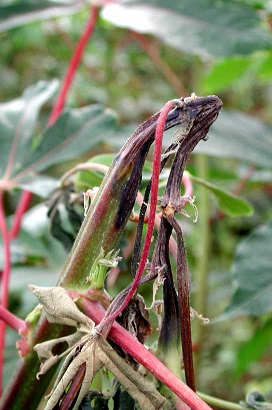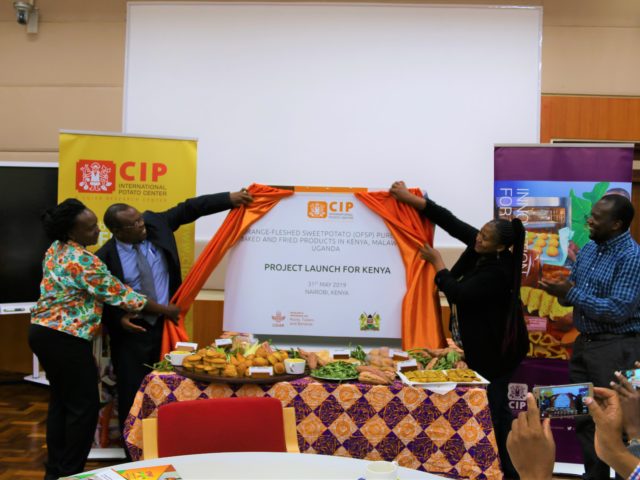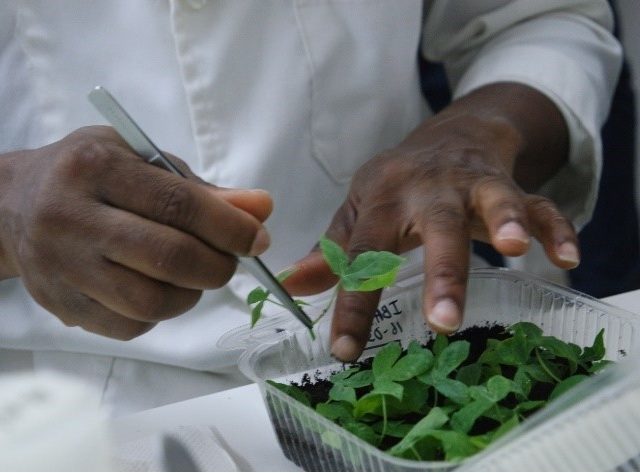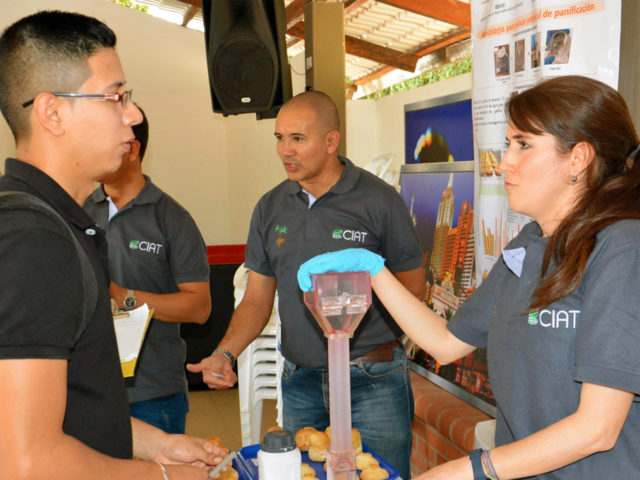As researchers try to predict the potential threat that pests and diseases pose for RTB crops, and develop strategies to help local agricultural research and extension institutions deal with them, the role of climate change is all too often the missing factor in their equations. Long-term shifts in temperature and rainfall are expected to transform the abundance and distribution of crop pests and diseases, yet there is a dearth of information on which crops and regions are the most vulnerable and how quickly things might change.
RTB is consequently funding an ambitious, multidisciplinary collaboration to fill that knowledge gap. Called Management of RTB-critical pests and diseases under changing climates through risk assessment, surveillance and modeling, the project will begin fieldwork following a workshop this week (January 29-31) in Kabale, Uganda. Researchers from the RTB centers and various partner organizations will gather to select an action site in the Great Lakes Region of East Africa, prepare household baseline and field surveys to identify and quantify the impact of the main crop pests and diseases there, and draft a work plan for the coming years.
Jürgen Kroschel, Science Leader for Agroecology and Integrated Pest Management at the International Potato Center (CIP), and one of the project’s leaders, explained that the main goals are to conduct risk analyses for the most serious insect pests and pathogens affecting RTB crops in East Africa – through targeted surveillance and use of generic climatic response models for predicting how climate change will affect them – and to use the results to help the region’s governments, non-governmental organizations and private sector to manage those threats.
The collaboration is building upon the experience and tools developed during a three-year CIP led project to model climate change’s impact on critical insect pests in Africa, which was funded by the German Federal Ministry of Economic Cooperation and Development (BMZ). Among that project’s results was open-source software called Insect Life Cycle Modeling (ILCYM), which CIP’s Agroecology modeling team developed to facilitate insect phenology modeling and risk mapping under current and future climate change scenarios. CIP is using the software for the principal potato and sweetpotato pests, whereas Bioversity International has begun applying it to banana pests, the International Institute of Tropical Agriculture (IITA) is using it for cassava pests, and the International Centre of Insect Physiology and Ecology (icipe) is applying it to maize and other crop pests.
“The idea is for entomologists and plant pathologists working with each RTB crop to be involved in this,” Kroschel said. He explained that one of the priorities is to use the tools in ILCYM to model climate change’s impact on viral diseases that are spread by insects. “We have been modeling several insect pests that are vectors for viruses, but we still need to understand how increased temperatures can affect virus transmission by insect vectors.”
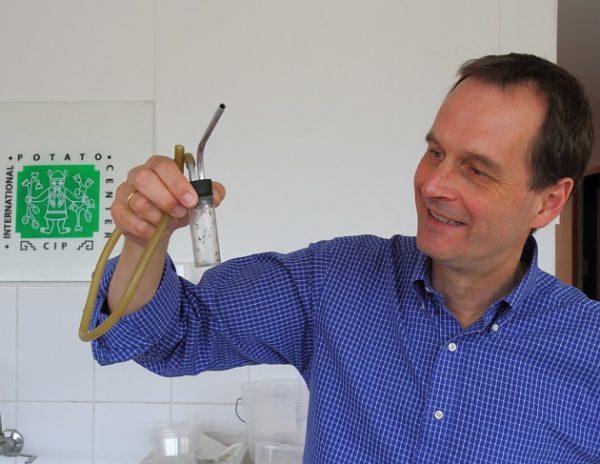
J. Kroschel holding a jar of parasitoid’s (Orgilus lepidus) used as a biological control for the potato tuber moth in the Andes.
Kroschel explained that after workshop participants have agreed upon the initial action site, approximately 30 weather stations will be installed in that area and partners will begin completing field surveys. He added that the Great Lakes Region was chosen for the initial research because the main RTB crops are widely cultivated there over a range of altitudes, and are vulnerable to an array of pests and diseases. Present climatic data will be collected at various altitude gradients and used to model the impact of climate change scenarios on the potential pest and disease abundance and intensity in the Great Lakes region.
“We want to have tools in place to better understand the risks of pests and diseases that climate change will pose using pest risk analysis,” Kroschel said. “We also want to understand the current impacts of those pests and diseases on crops and livelihoods in the region, and to use the models to predict how much this could change in the future in order to help local people to prepare for those changes.”
RTB has provided funding for three years of field and laboratory work, but Kroschel hopes additional donors and CGIAR Research Programs will join the effort in 2014, which would allow research at action sites in several countries to make model results more robust and facilitate knowledge sharing. He observed that the baseline farm surveys will produce socioeconomic data that will be useful for national organizations and other research programs, and could be complemented with information on other crops produced at the action site.
Kroschel noted that approximately 30 percent of the RTB funding will go to international partners, which include the US universities Kansas State and Ohio State, Denmark’s Aarhus University and CABI. He explained that the first climatic data sets from the field surveys should be ready in late 2015 to run the models and simulate future changes in the occurrence and abundance of pests and diseases. By the end of the third year, initial results and strategies should be available to support policy makers in the preparation of national and regional adaptation plans, which will include integrated pest management strategies and, specifically, biological control.
CIP has already had success with the development of attract-and-kill technology in the Andes, and is collaborating with icipe on the release of 3 parasitoids native to South America to control the leaf miner fly in Kenya. Two of those species have already been successfully established in the field and icipe is currently studying the impact of their release.
